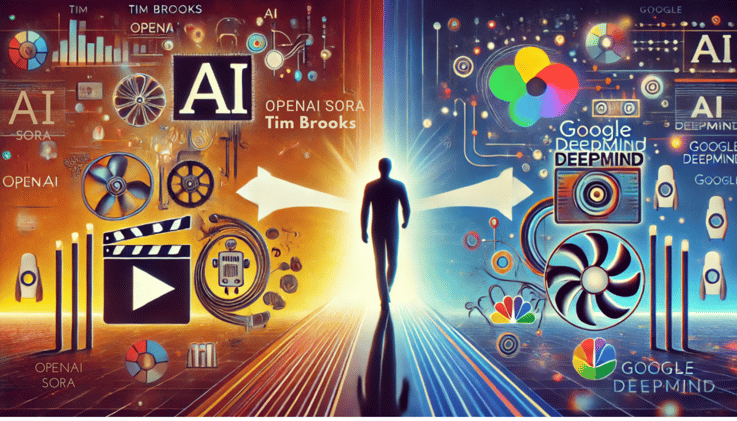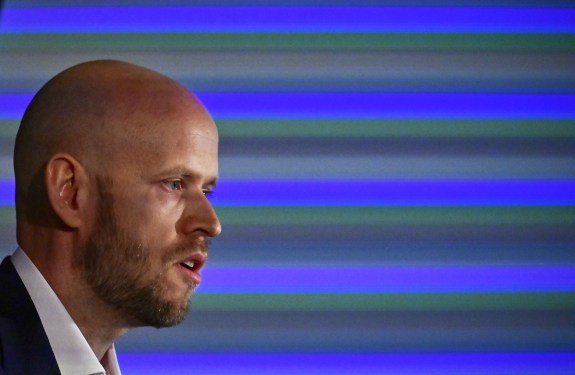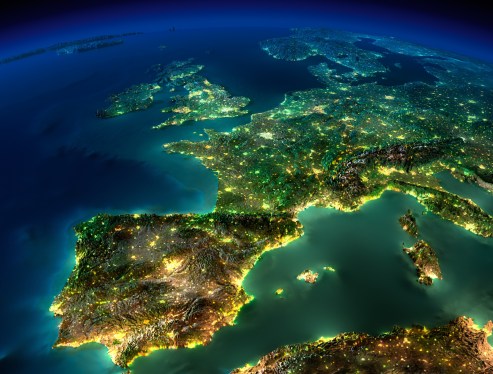In a move that signals growing competition in the field of artificial intelligence (AI) video generation, Tim Brooks has announced his departure from OpenAI to join Google DeepMind as the lead for video AI research. Brooks was one of the co-leads of OpenAI’s Sora project, which aims to generate high-quality videos using AI algorithms.
Brooks’ Role in Developing Sora at OpenAI
Before joining DeepMind, Brooks played a pivotal role in developing Sora, OpenAI’s highly anticipated video generation tool. He was among the first researchers to work on the project, which began in early 2023, and claims to have led the research direction and model training for Sora. His departure is seen as a significant loss for OpenAI, as the company continues to face both technical challenges and stiff competition from rivals like Luma and Runway.
Brooks’ New Role at Google DeepMind
In his new role at DeepMind, Brooks will be responsible for leading research in video generation technologies and ‘world simulators.’ World simulators are AI systems that can generate realistic virtual environments, which have the potential to revolutionize various industries, from entertainment to robotics.
Welcome to DeepMind, Tim Brooks!
Demis Hassabis, CEO of Google DeepMind, welcomed Brooks in a response to his post on X, stating that Brooks will help bring the concept of a ‘world simulator’ to life. While the term remains somewhat vague, DeepMind has previously applied it to their Genie model, which can generate playable, action-controllable virtual worlds from a range of inputs, including synthesized images, sketches, and real photos.
The Potential of World Simulators
In a 2023 paper, DeepMind researchers described the potential of a real-world simulator as ranging from controllable content creation in areas like gaming and film to training AI agents in simulated environments that can later be deployed in the real world. This concept underscores the broader vision for AI-generated virtual worlds, where simulated environments could serve practical purposes in various industries.
Challenges and Setbacks for Sora
Reports suggest that Sora has faced technical hurdles, particularly in terms of processing speed. Initial versions of the system reportedly took over 10 minutes to generate a 1-minute video clip, putting it behind competitors. OpenAI is currently training an improved version of Sora that could produce clips more efficiently.
Rising Competition in AI Video Generation
As OpenAI works to refine Sora, other AI video generation systems are gaining ground. For instance, Google’s own video generation model, Veo, was unveiled at its I/O developer conference earlier this year. Veo will soon be integrated into YouTube Shorts, allowing creators to generate backgrounds and six-second video clips.
High-Profile Departures from OpenAI
Brooks’ exit is the latest in a series of high-profile departures from OpenAI in recent months. These include former CTO Mira Murati, chief research officer Bob McGrew, and research VP Barret Zoph, all of whom resigned in late September. Additionally, co-founder and former chief scientist Ilya Sutskever, prominent research scientist Andrej Karpathy, and ex-safety leader Jan Leike have also left the company.
What This Means for AI Video Generation
Tim Brooks’ move from OpenAI to Google DeepMind highlights the growing competition in the AI video generation field. As Brooks brings his expertise in developing Sora to DeepMind, this could accelerate Google’s advancements in video generation technologies, including its Veo model. With industry giants like Google and OpenAI competing to lead the next wave of AI-driven video innovation, we could see rapid progress in applications ranging from content creation for films and games to real-world simulations and virtual environments.
The Future of AI Video Generation
As AI video generation technology continues to advance, we can expect to see significant improvements in processing speed, quality, and versatility. With the likes of Google and OpenAI pushing the boundaries of what is possible with AI-generated videos, it’s likely that we’ll see more innovative applications in various industries.
Timeline of Brooks’ Move
- Early 2023: Brooks begins working on Sora at OpenAI.
- Late 2023: Brooks announces his departure from OpenAI to join Google DeepMind via a post on X.
- Present day: Brooks is leading video AI research at Google DeepMind, focusing on world simulators and video generation technologies.
Conclusion
The departure of Tim Brooks from OpenAI marks a significant shift in the competitive landscape of AI video generation. As Brooks brings his expertise to Google DeepMind, we can expect to see rapid advancements in this field. With industry giants like Google and OpenAI competing to lead the next wave of AI-driven video innovation, it’s likely that we’ll see more innovative applications in various industries.
References
- [1] "Tim Brooks’ X Post"
- [2] "Genie: A Generative Model for Content Creation"
- [3] "World Simulators: A New Frontier in AI Research"
Related Posts
- "Google DeepMind Unveils Veo, a Revolutionary Video Generation Model"
- "OpenAI’s Sora Faces Technical Challenges, But Still a Promising Development"
- "The Future of AI Video Generation: Trends and Predictions"






